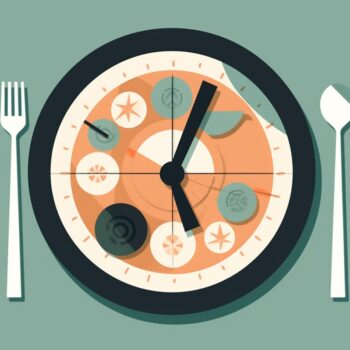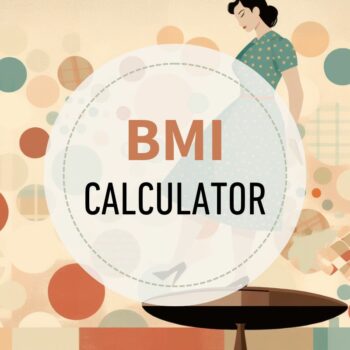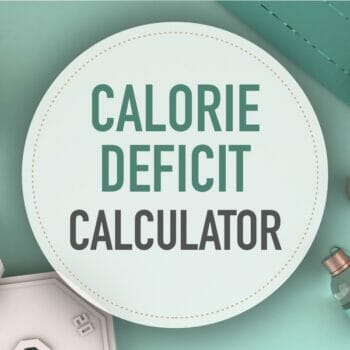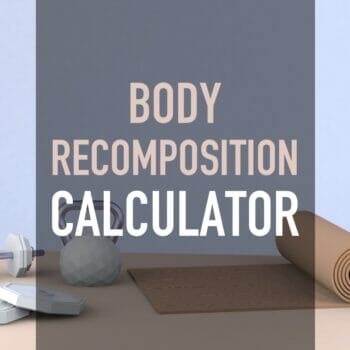Macro Calculator
This free, easy-to-use macro calculator gives you your optimal macronutrients and calories. It’s a weight loss or muscle gain calculator for both women and men.
Combine with macro counting or flexible dieting to reach your goals faster.
How to get leaner and stronger?
Our comprehensive macro-based fat loss program shows you how. Learn more
How do macros work?
The foods we eat are made up of three macros (macronutrients). These are carbohydrates (carbs), protein, and fat.
Chicken is high in protein but has no carbs; rice is high in carbs but has very little fat or protein. The three macronutrients provide the body with energy and raw materials for growth and repair.
By calculating the appropriate daily calorie amount for you, we can then break this down into the best macronutrient ratios to achieve weight loss.
Basic steps for macro counting
- Enter details into the calculator
Make sure to choose the correct goal. - Take note of your calories and macros
These will be the targets you are aiming for each day. - Track your macros
Use an app or pre-plan your meals. - Measure results
Don’t use basic weight scales.
Use proper body composition scales (we recommend Renpho) to measure fat and muscle mass changes.
What is a good macro ratio for fat loss or muscle gain?
Your macros should be based on your Total Daily Energy Expenditure (TDEE) and goals.
The calculator defaults to the best macro ratio proven to work for most people.
This ratio is:
- 30% fat
- Protein is 0.65 grams per pound of body weight,
- The remainder is carbs.
Depending on your goal, this will be either a calorie deficit or a surplus.
You can go further and make more adjustments: Perhaps you’re an extreme endomorph and do better with fewer carbs. Or perhaps you have one kidney and need to eat less protein.
You can fine-tune your results with a bit of math. See how to change your macros here.
What is a good protein ratio?
Rather than a percentage, proteins are based on your body weight. Our calculator has three settings:
- Moderate adjusts the ratio to 0.65 grams per pound of body weight.
This is appropriate for sedentary individuals or people with higher body fat percentages. - High is for active people with moderate strength training and an average body fat percentage.
- Maximum will set the ratio to 1 gram per pound.
This amount is good for bodybuilding and gaining muscle mass. You must be doing intense training.
Find out how to fine-tune your protein ratios when counting macros
Fat macro ratio
Set fat at 30% of daily energy expenditure.
Most people do very well with this amount of fat. See more about choosing the best macro fats. Because of high-fat diets like keto, many people are now eating more fat than they need to.
Carbohydrate macro ratio
Once you’ve calculated protein and fat, the remainder of your daily calories should be from carbohydrates.
Carbs fuel your body and workouts – and are the body’s preferred energy source.
If you are coming from a low-carb background, this may seem high. However, according to respected nutritional research, this is a moderate amount of carbs.
If you are eating according to your TDEE, the notion that carbs cause weight gain or stop fat loss is incorrect.
Using as a Calorie Deficit Calculator
As a weight loss calculator, this tool establishes a safe calorie deficit only.
The Lose option puts you in a 20% calorie deficit, promoting safe, steady weight loss.
The best macro ratio for body recomposition
If you want to recompose your body (lose fat and gain muscle simultaneously), then use the body recomposition calculator.
Macro ratio for maintenance
The Maintain button shows you the macro levels to maintain your current weight.
This is great if you have lost weight and don’t want to gain it back.
Macro ratio for muscle gain
The Gain button puts you in a 20% calorie surplus.
The macro breakdown is designed to build muscle fast in conjunction and must be combined with a comprehensive weight training program.
Underweight people can also use it.
TIP: Try starting with the maintenance goal and gradually increasing calories if you want lean muscle gains.
Calculating macros using your body fat percentage
The calculator uses your body weight to determine calories and macros.
However, you can obtain superior results by using your body fat percentage. The calculator allows you to choose which method: Normal for body weight, Lean Mass for fat percentage.
When to choose the Lean Mass Formula
If you are lean (have a low body fat percentage), choose the Lean Mass formula and enter your body fat %.
If you are classified as obese and have a lot of weight to lose, the lean mass formula is superior. You can read more about macro counting and obesity.
Help? Calculate your ideal body weight or get an assessment of your body fat percentage.
Why the difference? Muscle cells burn more calories than fat cells, so the more accurately we measure this, the better your results will be.
How to calculate macros per meal
You can break this down into meals once you’ve calculated your daily macros in the calculator.
Choose from 2 to 6 meals daily to see the macro ratio you can track for each meal. For some people, this is easier, but for others, this is too much detail.
Do what works for you.
Meal Plans
See a 5-day macro-based meal plan. It includes three meals and two snacks per day.
Macro calculator activity level settings
A higher activity level means a higher daily calorie goal.
For example – if you maintain your weight at 2,000 calories per day, adding vigorous daily exercise means you need more calories to maintain your weight.
If you are sedentary and trying to lose weight, adding exercise will increase your daily calorie goal.
The idea seems counter-intuitive, but more energy is required to fuel your workouts. More workouts lead to increasing metabolism; therefore, more fat is burned!
Undereating is one of the leading causes of the weight loss plateau.
So many of our clients previously “hit the wall” with dieting. They would continually reduce calories, stop losing fat, and gain weight when they eat a little more.
Macro counting defeats this by prescribing the right food and calorie levels.
Which activity level do I choose?
- Sedentary: Just regular everyday activity like a bit of walking, a couple of flights of stairs, eating, etc.
- Light: Any activity that burns 200-400 calories (females) or 250-500 calories (males) over your sedentary amount.
- Moderate: Any activity that burns 400-650 calories (females) or 500-800 calories (males) more than your sedentary amount.
- Extreme: Any activity that burns more than 650 calories (females) or more than 800 calories (males) in addition to your sedentary amount.
Other options for determining your calorie burn
- Use our calories burned calculator – it accurately assesses over 380 activities.
- Use a fitness tracker – like a Fitbit or Apple Watch (note that they can overestimate calorie burn).
- Use a suitable app – like MapMyFitness
Why should I eat more when I exercise more?
High physical activity not fueled with enough calories will lead to muscle catabolism (breakdown of muscle fiber).
This lack of nutrition could stall your weight loss, so eat up if you love to exercise!
I’ve got my macros – now what?
Once you’ve identified your target daily macros, you must determine the macros in all your foods.
By tracking them daily, you can reach your recommended macro targets that encourage fat loss, muscle gain, or whatever your goal may be.
You can learn more about the macro counting system and the flexible dieting philosophy. Many people use an app like Myfitnesspal to track macros.
For more specifics on what to eat – see a sample macro meal plan or a list of macros for familiar foods.
View article sourcesSources
- Mifflin, M. D., St Jeor, S. T., Hill, L. A., Scott, B. J., Daugherty, S. A., & Koh, Y. O. (1990). A new predictive equation for resting energy expenditure in healthy individuals. The American Journal of Clinical Nutrition, 51 (2), 241-247. Link
- McArdle, W. D., Katch, F. I., & Katch, V. L. (2010). Exercise physiology: nutrition, energy, and human performance. Lippincott Williams & Wilkins. Link
- Jequier, E. (1994). Carbohydrates as a source of energy. The American journal of clinical nutrition, 59(3), 682S-685S.
- Lemon, P. W., Tarnopolsky, M. A., MacDougall, J. D., & Atkinson, S. A. (1992). Protein requirements and muscle mass/strength changes during intensive training in novice bodybuilders. Journal of Applied Physiology, 73(2), 767-775. study abstract link
- Grundy, S. M. (1999). The optimal ratio of fat-to-carbohydrate in the diet. Annual review of nutrition, 19(1), 325-341. abstract
- Conlin, L.A., Aguilar, D.T., Rogers, G.E. et al. Flexible vs. rigid dieting in resistance-trained individuals seeking to optimize their physiques: A randomized controlled trial. J Int Soc Sports Nutr 18, 52 (2021). https://doi.org/10.1186/s12970-021-00452-2
2,104 Comments


 Menopause Macro Calculator
Menopause Macro Calculator Intermittent Fasting Calculator
Intermittent Fasting Calculator BMI Calculator
BMI Calculator Calorie Deficit Calculator
Calorie Deficit Calculator Body Recomposition Calculator
Body Recomposition Calculator
Hi Ted,
I am 24, 5ft2, weigh 51kg, female, work 9-5:30 but have a 15 minute walk to and from work, plus 30-45 minutes of resistance/cardio training a day, my bodyfat was only 14.8% at the last check (in December) but I want to lose the last stubborn fat on my thighs! I used light activity on the lean calculator as I sit for most of the day, and I came out as 1410 calories to lose 10% (172 grams of carbs (48%), 93 grams of protein (26%), 39 grams of fat (25%). Does this seem right to you? I’ve never tracked macros before so just wondered if this will help me achieve my goal? I definitely eat less carbs that this currently! Thanks
Hi Jenn, It seems like a good place to start but since you have a lot of lean mass already, you should do the higher protein setting. You also may be in the moderate activity category.
Hi there, I calculated my macros with your calculator and came out with, P 154 F 45 C 153… I am 5’6, weight 154, age 23 and I have a 9-5 desk job but train weights w cardio 6x a week. I read on a website even if you make it to gym for 45-60 min your activity level should always be sedentary or light. Is that true, and will these macros (I chose lose category for 20% deficit) help me lose weight? Any answers would be great! Thank you
Hi Jerrika, No, that’s not correct. Any movement beyond just your normal daily activity should be reflected in your TDEE. You need to account for those exercise calories in your macros and then deduct 20%.
Ok! The macros above are with lightly active) Desk job 9-5 then weight/cardio) for my activity level? I usually burn around 270 calories during cardio. Are the macros I have above accurate?
yes, 270 calories would be light activity. All the best and keep me posted. If you need more help, please check out our programs offered through this site.
I’ve been following macros for 7 weeks and have had great results using this. My goal is to lose that last bit of stubborn belly fat. I have read up on carb cycling every other day combined with cardio on low carb days would help burn more fat. If you think this would help, what is a good percentage to lower carbs by? And would I increase fat? I’m worried that if I increase fat to make up for lower carbs this will not help. Or should I maintain protein and fat and just fall into a lower calorie deficit? Some people recommend increasing fat while others recommend not.
There just isn’t scientific evidence that carb cycling or eating lower carbs will get rid of belly fat faster than just maintaining a calorie deficit in general. For females especially, you have hormones that are working against you wanting to keep some body fat. I would tell you to stay the course and be patient.
Hello I am 5’3 at 139lb. I want to drop my body fat percentage but still keep building muscle without getting soft. I lift weights 5x a week and Cardio 4x a week at 400 cals. Says my macros should be 139p 52f 208c. This correct?
Hi Erica, To lose fat you’ll have to be in a calorie deficit, but you can’t be in too much of one or you will have trouble building muscle. You could start with the “lose 10%”. I also give more tips and tricks in the Gain Muscle Edition of my flexible dieting book available through this site.
dont listen to this garbage site, get on ketogenic diet… dont eat carbs at all….veggies, eggs, chicken – dont eat like a pig and drink tons of water – yes, exercise and you dont need 2000 calories unless you are a work out champ or 6″5 220
50% carbs??? what a fucking joke
Hi Ted,
I just started IIFYM about 2 weeks ago and I’m struggling to keep up with it due to constant fatigue and hunger. I’m a 22 year old female, 160cm, 62.1kg, bodyfat 31.4%. I’m a part time waitress in a busy restaurant and on top of that I do power cardios, hiit, weight training for roughly 1.5-2 hours, 4 times a week. I’m looking to tone up, lose some bodyfat but still building muscle.
My macros has been set to 1600 cals- 44g fats, 188g carbs and 113g protein.
Do you think I’m doing it right or should I up my numbers? I get hungry every 2-3 hours even after a big meal. My food source is tons of veg(non startchy ones) and fruits, lean protein and healthy fats, so relatively clean.
If I do a refeed day would it help my energy levels? how much should I be eating if so?
Hi Carine, I can tell right off the bat that you aren’t eating enough given your activity. With work and 2 hours of exercise beyond that, you are in the very active category. You should be at around 1862 calories to lose fat at a 20% deficit. I suggest you start eating more every day.
Hi Ted I just did a health check yesterday and it says I lost 1% bodyfat in 2 weeks and half an inch off my waist, which is amazing! I’m scared of adding more calories in because I’m afraid it would make me gain back the weight/bodyfat. What should I do?
Also should I recalculate my macros since I dont have the same weight as before? Should I do this every time I loose them?
Thanks!
You would still lose but probably a bit more conservatively, but without the risk of possibly slowing down your metabolism in the future which would cause you to plateau. You only need to readjust at 5-10 pounds lost.
Hi Ted,
I had my macros counted a few months ago by someone. I am 36 year old female, 134 lbs, 5’5″. I do and have done what I would consider moderate-very active (4 miles taking me about 52mins, 30 mins of weights and another 30 mins of jogging/aerobics). I have been told that I should be eating 161g carbs/135g protein/51g fat. When I do the calculations on your system using moderate activity and maintaining for goal it gives me 230g carbs/111g protein/51g fat.
Should I look at revising my numbers?
Thanks!
Hi There, It looks like the macros you had done for you used the high protein setting, but they look like they also had you in a calorie deficit. If you’ve felt like you haven’t been making strength improvements at the gym, this is probably why. I recommend using the high protein setting above and following our results if you feel your performance at the gym has been lacking.
With my calculation it suggested 84g of protein. Is that per meal or per day.
Hi Danielle, I would have to know that stats you entered and settings used.
Hi there!
I have been tracking my macros for about a month now and I am just a little confused as to whether I should be adding in my exercise, calories burnt etc into myfitness pal?? I exercise daily for around an hour doing a mixture of hiit and weight training, i usually burn between 300/500 calories. The rest of the day I am sat doing a desk job and walk to and from work which is about an hour. What should I put my activity level as? I want to make sure I am eating enough to build the lean muscle I am looking for! Thanks.
Hi Becky, Great job on tracking so far. You should be accounting for exercise in MFP. It looks like you would be moderately active. Here’s a tutorial on how to set everything up with MFP: https://healthyeater.com/iifym-myfitnesspal-tutorial
Thanks Ted. I have now changed so I am moderatly active which has now said i should be eating around 1800 calories a day which is alot more than before. I shouldnt now need to put my exercise into MFP as this will give me more calories? Is that right? Thanks
That’s correct, don’t allow MFP to track movement if you’ve already factored your exercise burn in. All the best and keep us posted on your success!
Hello Ted,
I found this article extremely helpful, I just still seem to be confused of which formula to use, etc. I am 5’3, 214 pounds. I have just started moderate activity and plan on maintaining that or improving. I would love a plan to lose weight, while gaining muscle.
What should my macros be?
Please and thank you!
Hi Melissa, you would want to use the regular formula but also account for the fat weight you are carrying since it’s more than 50 pounds. I can’t calculate your macros for you here, but can do so as part of our coaching package. I would love to help you, so please consider that option. https://healthyeater.com/personal-coaching
Hi Ted,
I’m trying to build muscle but maintain weight (or is it better to just gain for now and cut later). I workout 6 days/week
day 1: chest 30 min + back 30 min + cardio 30 min
day 2: shoulders 30 min + arms 30 min
day 3: legs 40 min + abs 10 min
day 4: back 30 min + chest 30 min
day 5: arms 30 min + shoulders 30 min
day 6: 1 hour cardio + 15 min abs
would i be moderately active? should i go with gain or maintain? thanks in advance
macros so far: ~2500/ day i’ve been stuck at 145 for 2 months but am getting leaner (from the looks of it)
Hi Yuzaru, Thanks for stopping by. It looks like you’d be averaging moderately active. You really have to be in a slight deficit for fat to burn so often you have manually calculate your macros in order to find your sweet spot. Some people have good success with the “lose 10” setting. I encourage you to check out the Gain Lean Muscle edition of my book offered through this site as I go into a lot more detail about the process there.